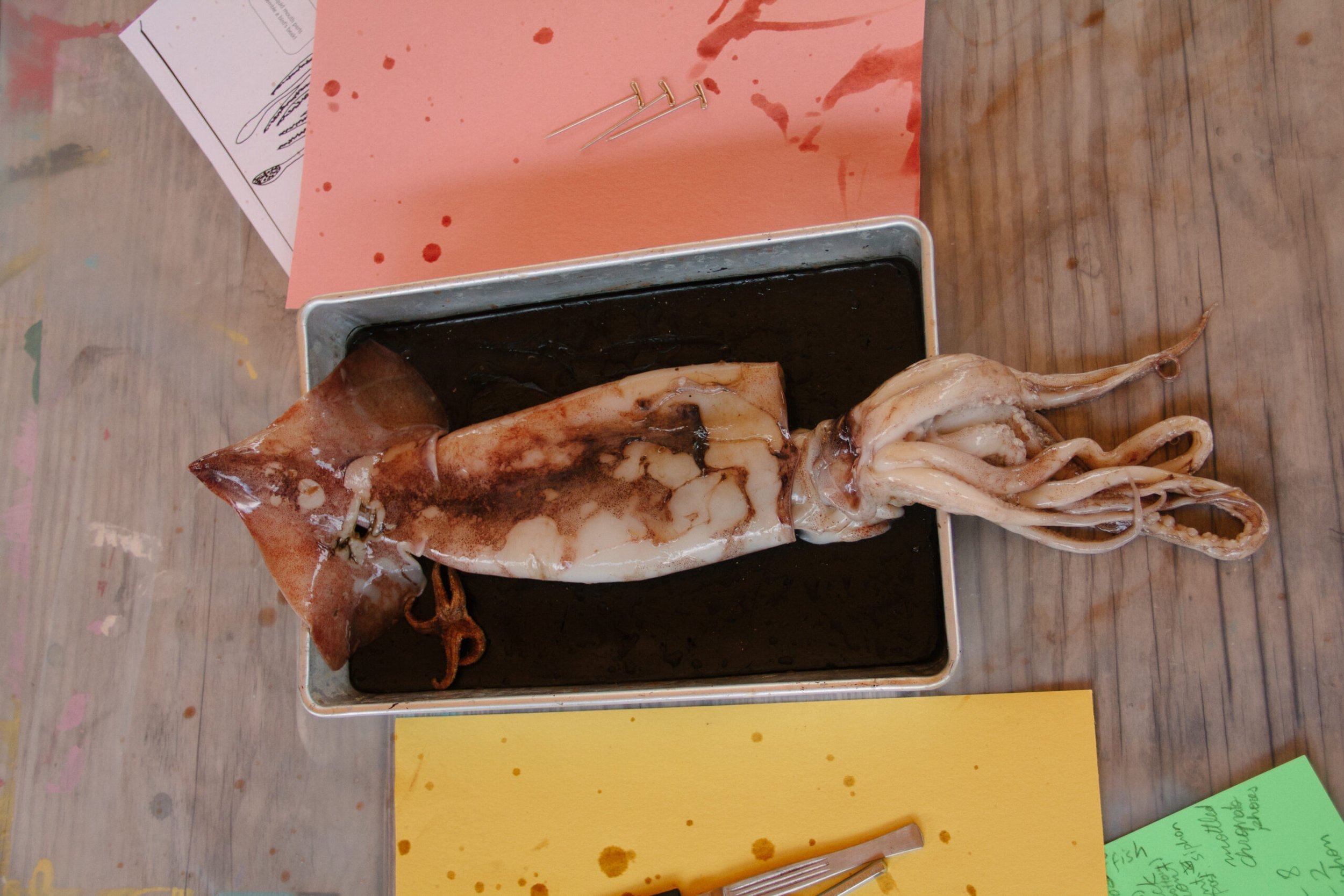Dissection!
Our thanks to Elementary Guide, Anna Schwind, from the Montessori Lab School at Grand Center who shared the below words. Last week she brought her third year children to join Villa di Maria's in a cross-classroom, multi-school, squid dissection.It is almost summer time. Children feel the warmth in the air, note that daylight lasts longer and longer (but somehow their bedtime doesn’t shift), and sense the culmination of their school year. They are excited and a little distractible. It is, of course, the perfect time for a particularly compelling lesson. It is the perfect time for the third years to dissect squids.
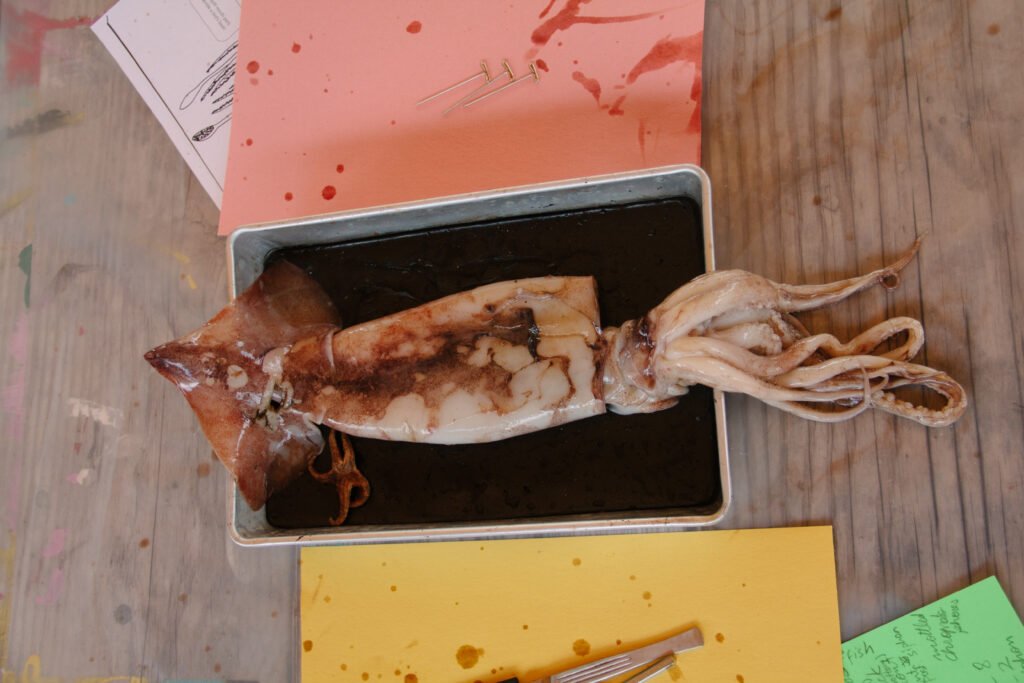
There is not a wrong or right time of the year for this work. It is not obligatory to do dissection in elementary at all, though it is instructive. However, as the year comes to a close and children become a bit restless, the perfect opportunity to extend their attention and compel their observation presents itself: dissection.
Dissection begins like all of the work in biology, and like much of the work in the elementary classroom. We speak of the phylum and class of the creature we will dissect. We place it within its larger context. We examine and observe the whole being, discussing where it lives and how it lives.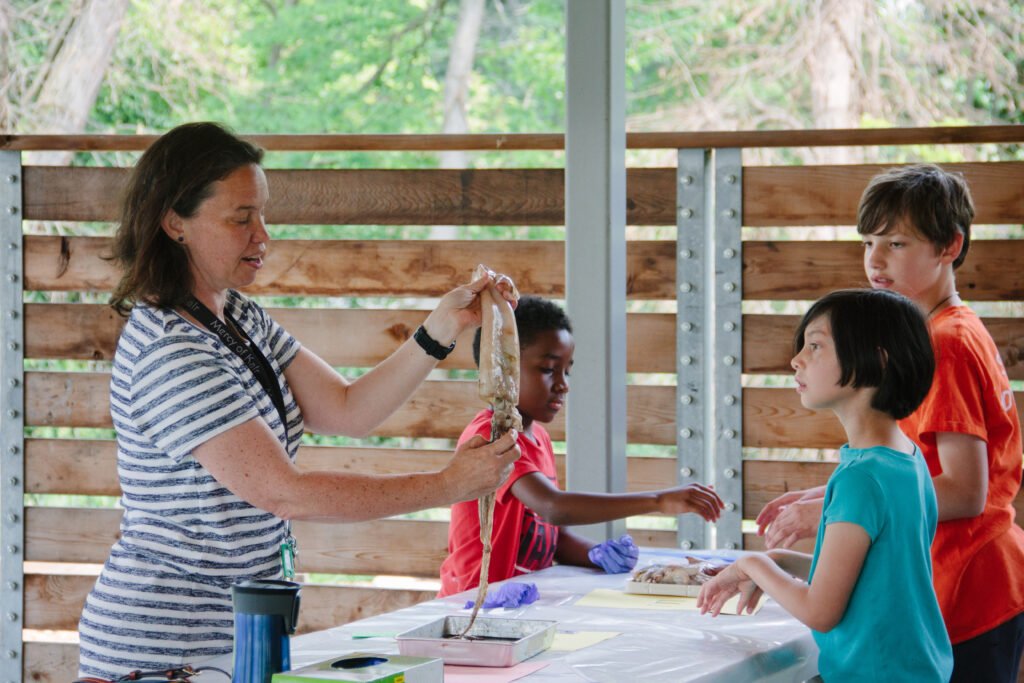

Each part is analyzed with the function in mind. The children are asked questions: “What are the longer arms for?” “What does it mean that this creature has such large eyes compared to its body size?” “What is this sack at the base of the mantle for?” (That one stumped them, until one child excitedly shouted, “It’s their jet propulsion thing!”) Indeed. The siphon is their jet propulsion thing.

Then we begin to cut it open. To examine the parts. When the children find something interesting they invite one another over to look. They ask questions. They touch, poke and prod. They make faces. They are one hundred percent engaged in observing the squid. They are making their own discoveries the Montessori way, through physical impressions with their senses. I encourage them not to wear gloves, to feel the slight bumps of the chromatophores, the soft squishy give of the gonads, the slick toughness of the beak.
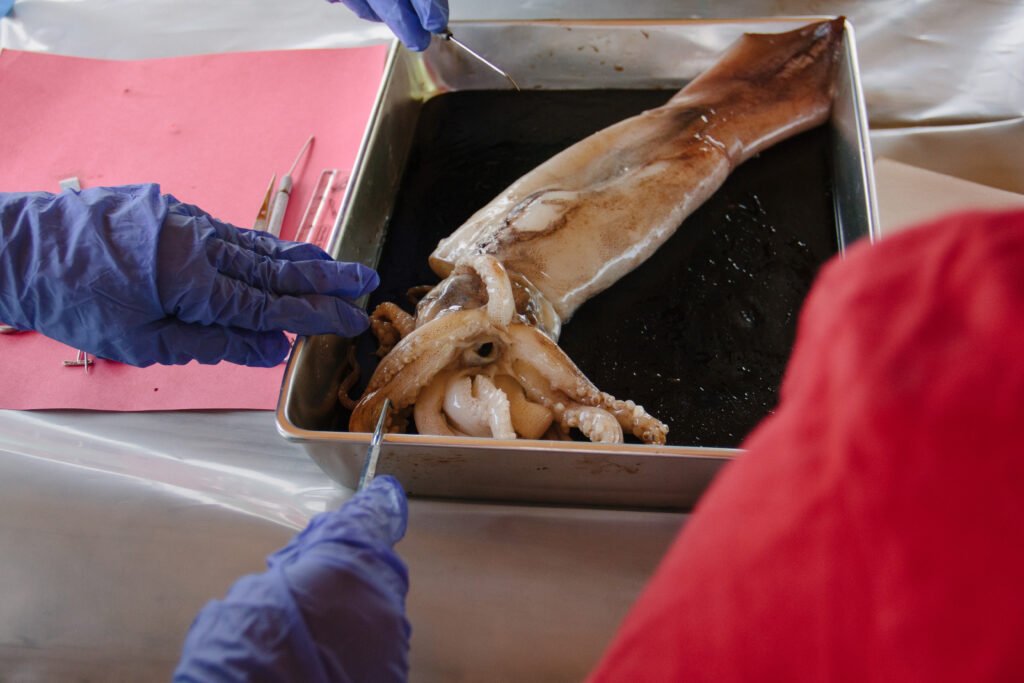
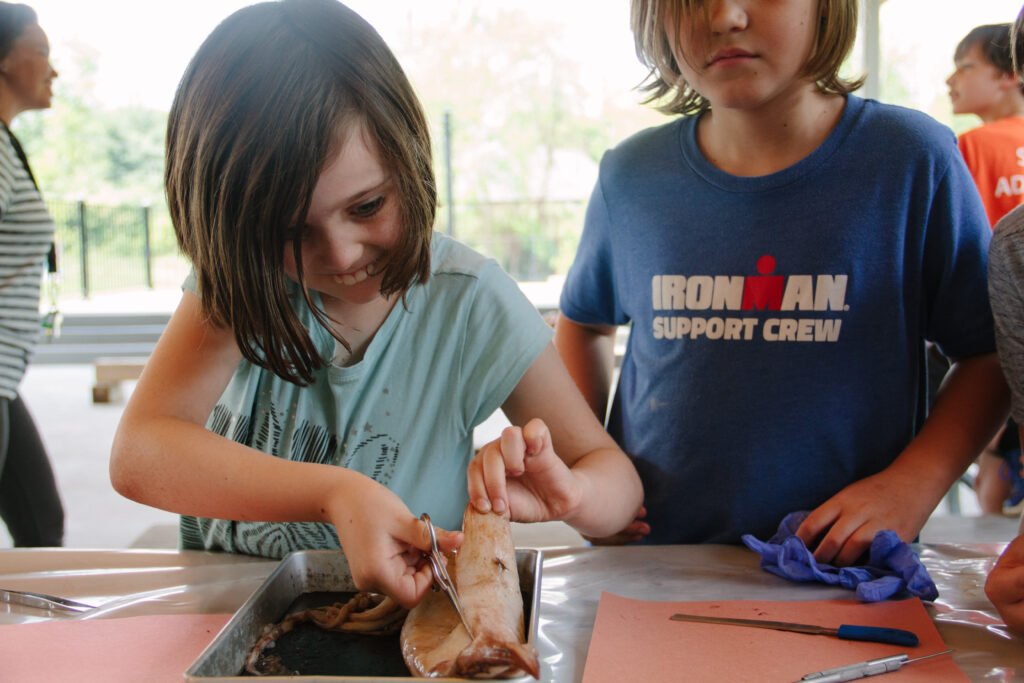
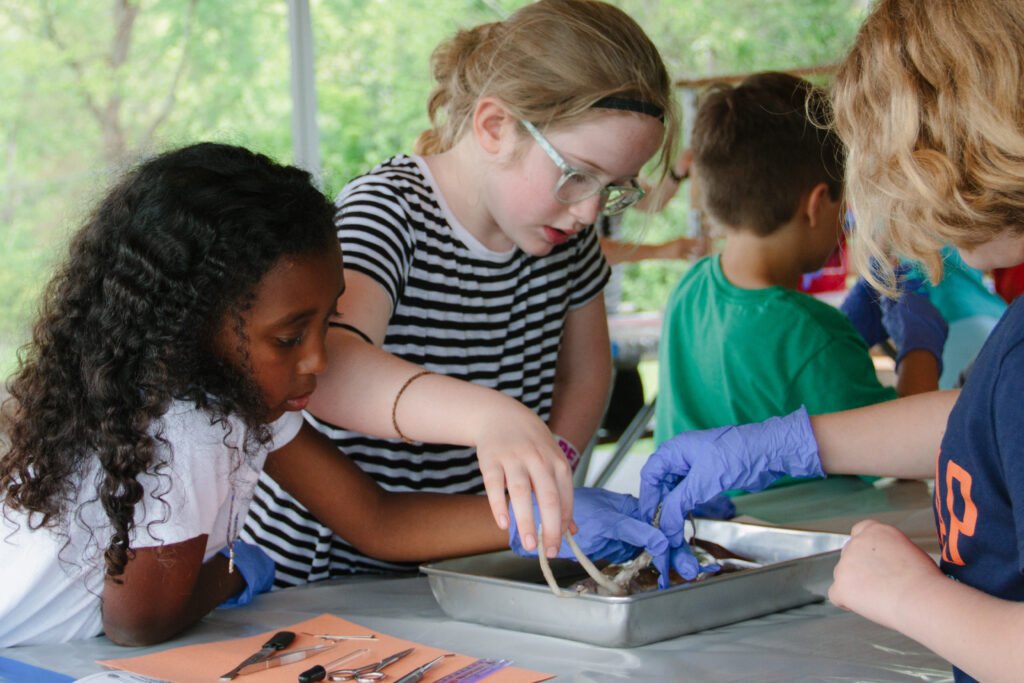
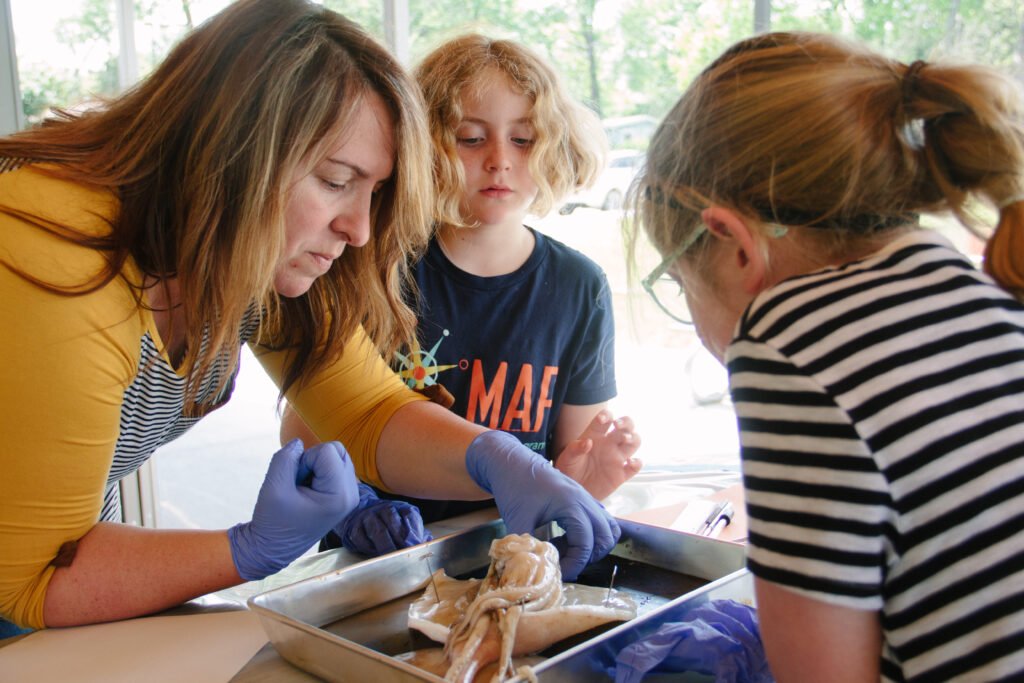
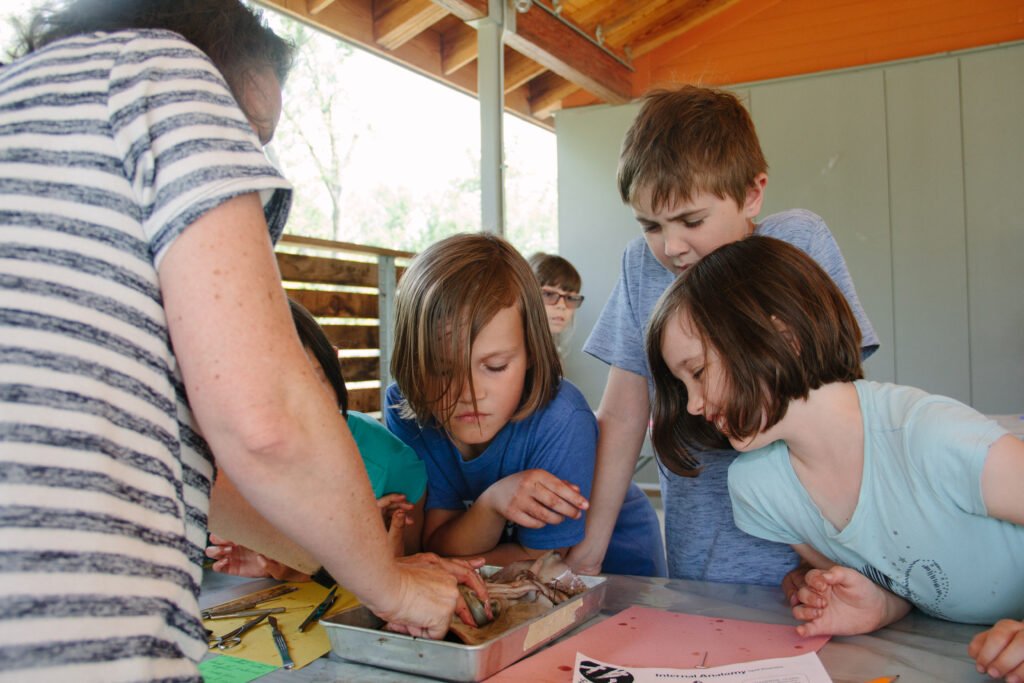
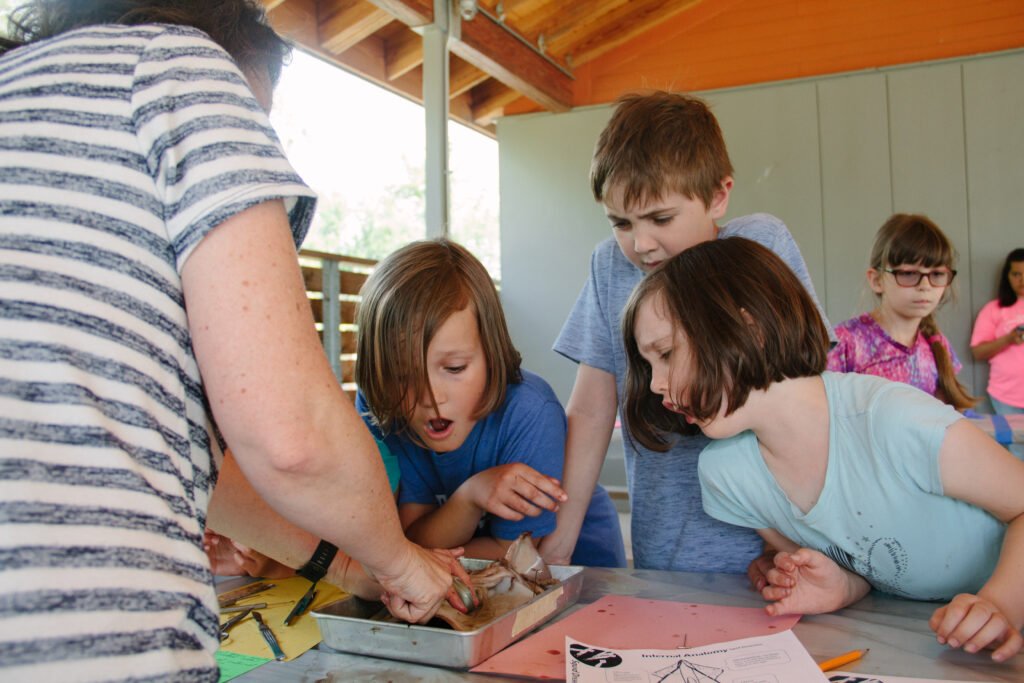 The exploration is guided at first, but then becomes more open ended. Some remove arms and examine the suckers, noting the tiny teeth-like ridges along their rim. Some slice open the livers and peruse the mess the organ makes in their pan. They become attached to their discoveries, and ask if they can take pieces home with them. (We tell them you do not want random squid parts in your home - you’re welcome).
The exploration is guided at first, but then becomes more open ended. Some remove arms and examine the suckers, noting the tiny teeth-like ridges along their rim. Some slice open the livers and peruse the mess the organ makes in their pan. They become attached to their discoveries, and ask if they can take pieces home with them. (We tell them you do not want random squid parts in your home - you’re welcome).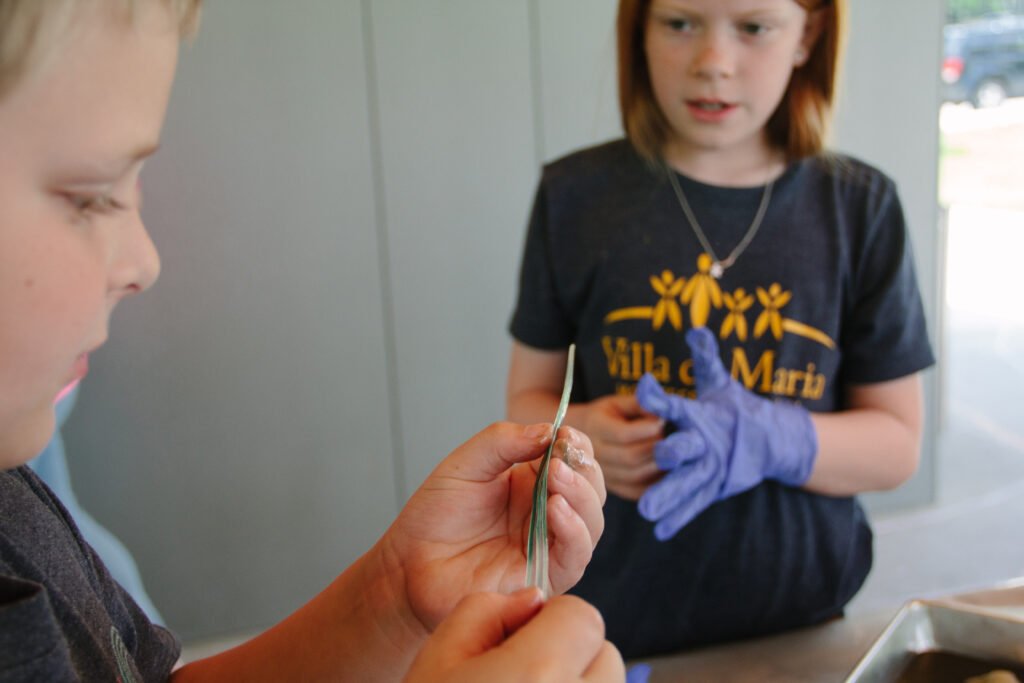
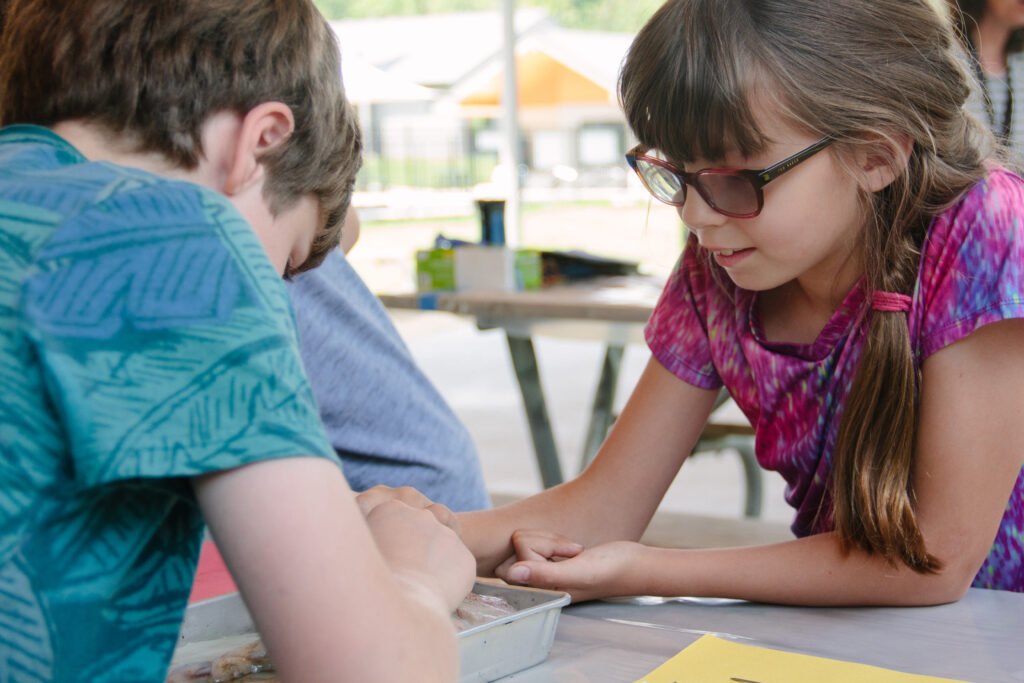
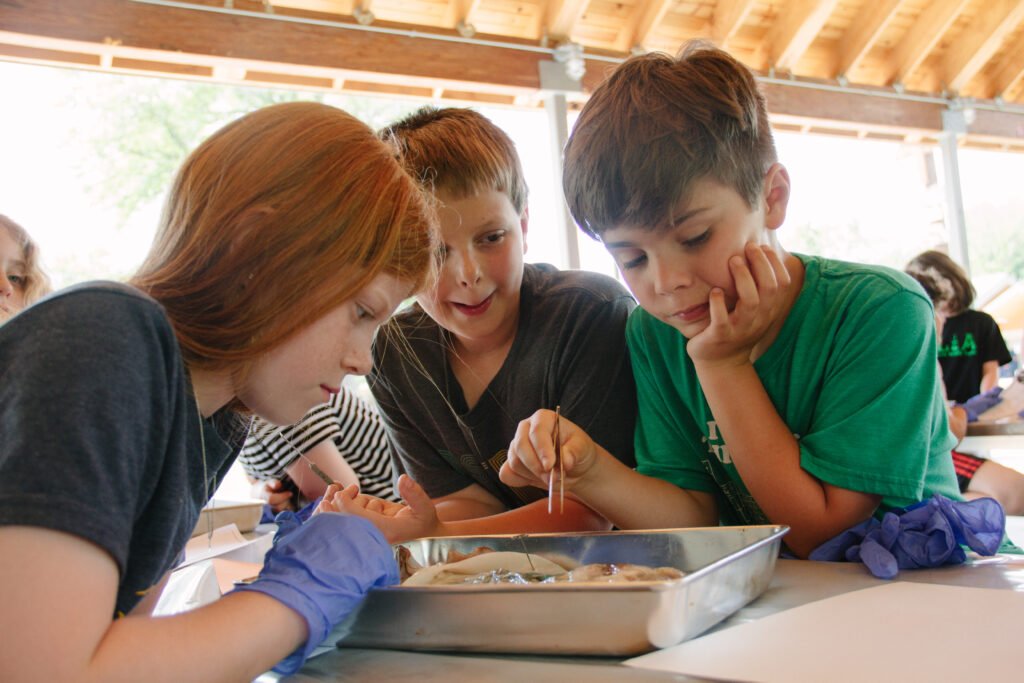
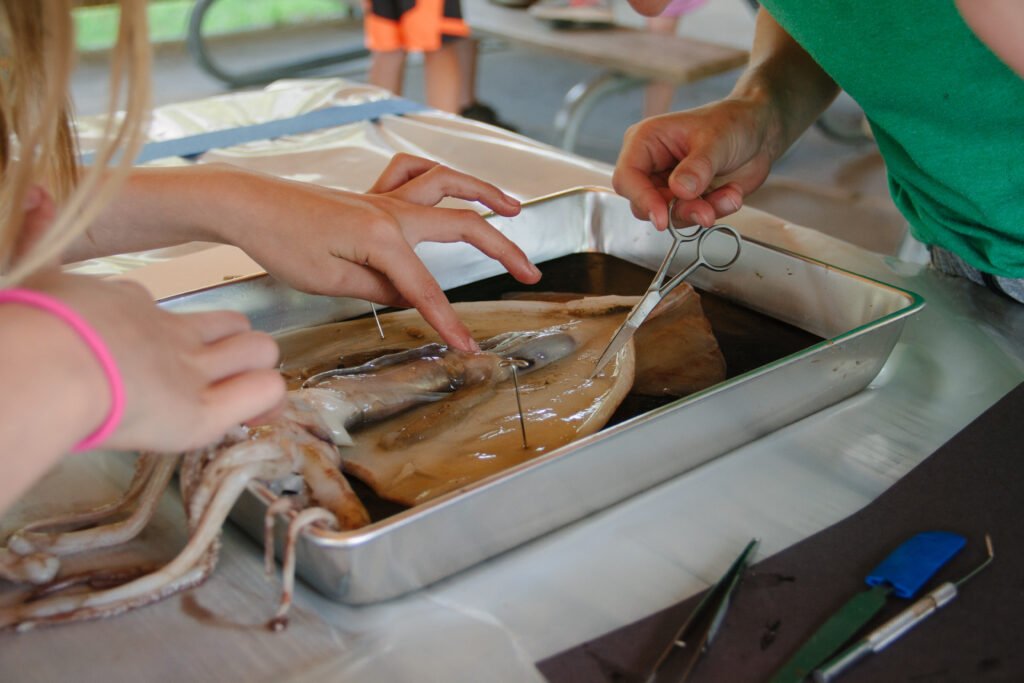
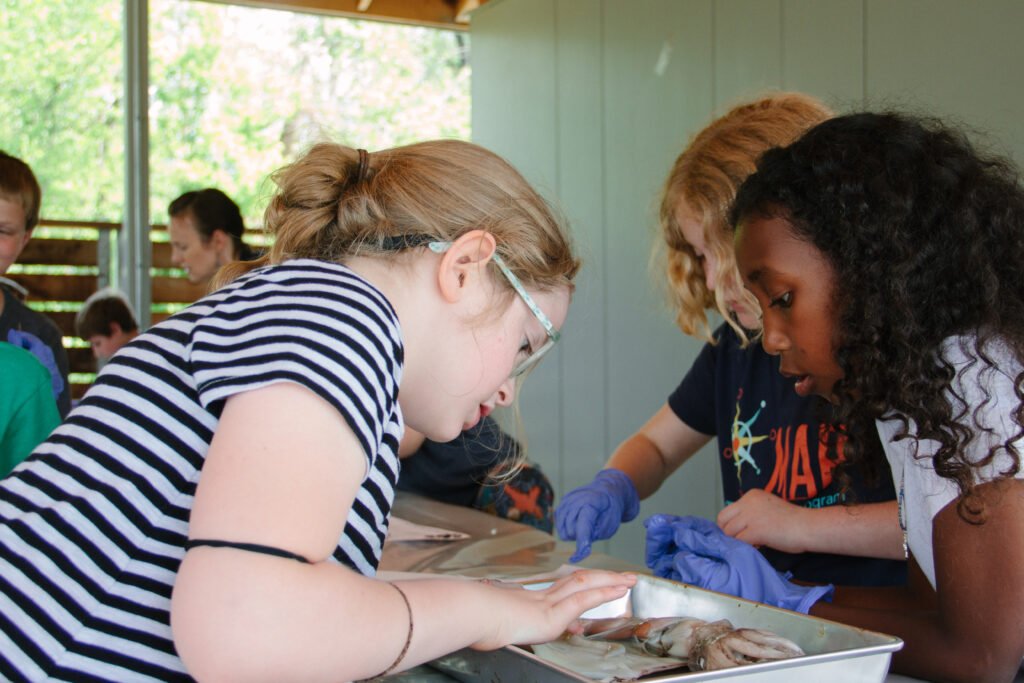 Then it comes time to close the cycle of activity. To clean up our work. The children are ebullient as they wash their tools, chattering, sharing their discoveries. They will have something to tell you about when they get home. And summer is one day closer.
Then it comes time to close the cycle of activity. To clean up our work. The children are ebullient as they wash their tools, chattering, sharing their discoveries. They will have something to tell you about when they get home. And summer is one day closer.Yes, it is the perfect time of year for this.
Melinda, you're pictures are perfect all year long! Your squid dissection photos perfectly pair with Anna's words. My thanks to both of you.

